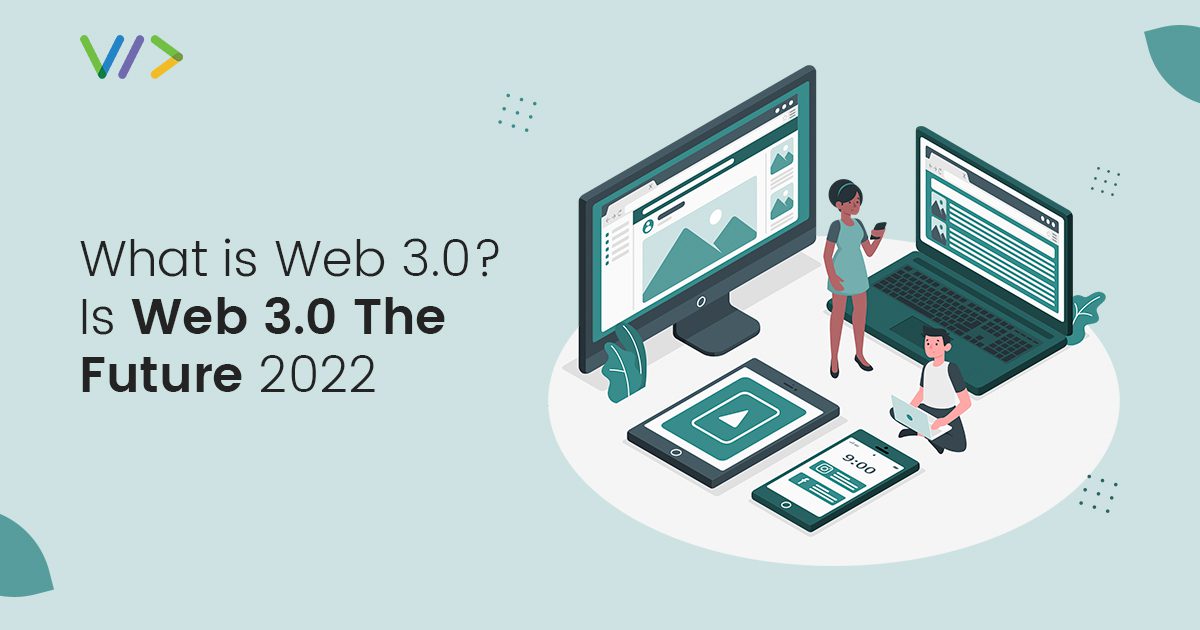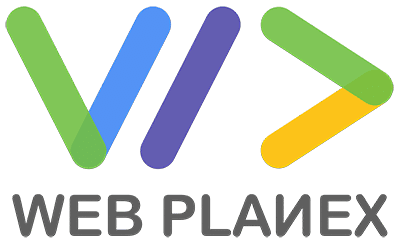
Web 3.0 is the third generation of internet services for applications and websites that focus on utilizing a machine-based comprehension of data making a semantic and data-driven internet. However, its believed that users’ online lives will be smoother, faster, and more productive. Web 3.0 is one of the latest interact technology that leverages artificial intelligence, blockchain, and Machine Learning to realize real-world human communication.
Web 2.0 is the current version of the internet with which users are familiar, while Web 3.0 represents its next phase. In this blog, we will go through what is Web 3.0, the features of Web 3.0, and the differences between Web 3.0 and Web 2.0.
Web3 is also known as Web 3.0 and is sometimes stylized as Web3. Web 3.0 is a third iteration or phase of the evolution of the web/internet based on blockchain technology. It includes concepts like decentralization and token-based economics.
Web 3.0 uses technologies based on the Semantic Web concepts and natural language processing to make user interaction. Tim-Berners Lee originally coined it. Web 3.0 is more secure, scalability, and protection for users. The latest internet technology leverages artificial intelligence, machine learning, and blockchain to achieve real-world human communication.
The term Web3 was coined in 2014 by Ethereum co-founder Gavin Wood referring to a “Decentralized online ecosystem based on blockchain.” However, in 2021 the idea of Web3 gained popularity.

The features of web 3.0 are as below.
- Trustless – Web 3.0 will be trustless. The network will permit participants to interact directly without going through a trusted intermediary. However, anyone, including users and providers, can engage without the requirement of permission from a controlling association.
- Permissionless – Permissionless means anyone can help the participants to interact directly without authorization from a governing body. Web 3.0 applications will run on blockchains, decentralized peer-to-peer networks, or a combination such as dapps.
- Connectivity and Ubiquity – With web 3.0, data and content are more associated and universal, got to by numerous applications. However, with a rising number of regular devices associated with the web-one illustration of which is the Internet of Things.
- Semantic Web – The semantic Web proves that it improves the web technologies to create, share and connect content through search. It is an analysis based on understanding the meaning of the words rather than using the keyword or numbers.
- Artificial Intelligence and Machine learning – Web 3.0 is also used for machine learning, a branch of artificial intelligence that uses data and algorithms—combining this capability with natural language processing in Web 3.0. However, computers can understand information like a human being to give quick and best results. This becomes more intelligent to satisfy the requirement of the users.
The Web 3.0 network will work through decentralized protocols to establish blockchain and cryptocurrency technology blocks. However, we can hope to see a solid combination and cooperative connection between these three technologies. Blockchain offers various options for revolutionizing enterprise processes through smart contracts, digital safekeeping, and transaction processing. In addition, they will be seamless, flawless coordinated, automated through brilliant agreement, and used to control anything from microtransactions.
Furthermore, it will actively use non-fungible tokens (NFTs), digital currencies, and other blockchains in Web 3.0. Blockchain technology will aid in developing decentralized applications resulting in the best internet.
Now, let us look at the example of Web3.0 applications.


Many companies have started building and have products to transform into Web 3.0 applications. It includes Apple, Google, Amazon, etc. Here we will show the two best examples of applications that use Web 3.0 technologies are Wolfram Alpha, Facebook, Siri, and more.
Wolfram Alpha – Wolfram Alpha is a computational intelligence platform that permits users to compute answers.
Especially, it is highly popular among students and professionals in disciplines like mathematics, nutrition, and science. However, these platforms utilize Web 3.0 by aggregating information from online databases and simplifying it.
On this platform, you can write a question, and it will understand it and give a response that is relevant to the context of the query. For various particular types of inquiries, it will give some unique answers to the question and then go ahead to provide correlated data that can help the users.
Facebook (Meta) – Many are anticipating the destruction of Facebook because of the transition from Web 2.0 to Web 3.0; this forecast is all accounts deluding. The social networking aspect of this social media giant will form the base framework for how the Web is utilized. However, the companies welcome people to generate a new society that’ll thrive on Web 3.0. By giving the Facebook API to engineers, the organization allows the designers to arrange their product reviews. However, result, Facebook has guaranteed itself longevity and another region in Web 3.0.
Before moving further into web 3.0, we must understand how we got here to Web 2.0. Let’s look at the main difference between Web 3.0 vs Web 2.0.
Web 2.0
Web2.0 highly user-generated content usability interoperability for end users.
Web 2.0 has brought out a new breed of startups to build interactive apps and websites like Wikipedia, Facebook, WhatApps, etc. Web 2.0 is a read-write web where users can read and write various content on websites and applications.

The development of server-side scripting languages, client-side scripting languages, and styling languages contributed to Web2.0 growth. Various features are available for Web 2.0, like dynamic content responsive to user input. Information flows between the site owner/users using evaluation and online commenting. Web2.0 depends upon our online activities uses of apps.
Web 3.0
Web 3.0 is a read-write interactive web where people can read, write and interact with content and 3D graphics on websites and apps. The semantic web concept goes back to Sir Berners Lee’s first idea that there is no central authority and no approval required. However, technology in this era is blockchain, a decentralized ledger of millions of nodes and data. The future of the internet is the Web. Web 3.0 will allows interaction with any individual or machine in the world. Web 3.0 relies on decentralized apps or dapps. dApps are built on blockchain platforms like Ethereum so that there is no single company in control.

